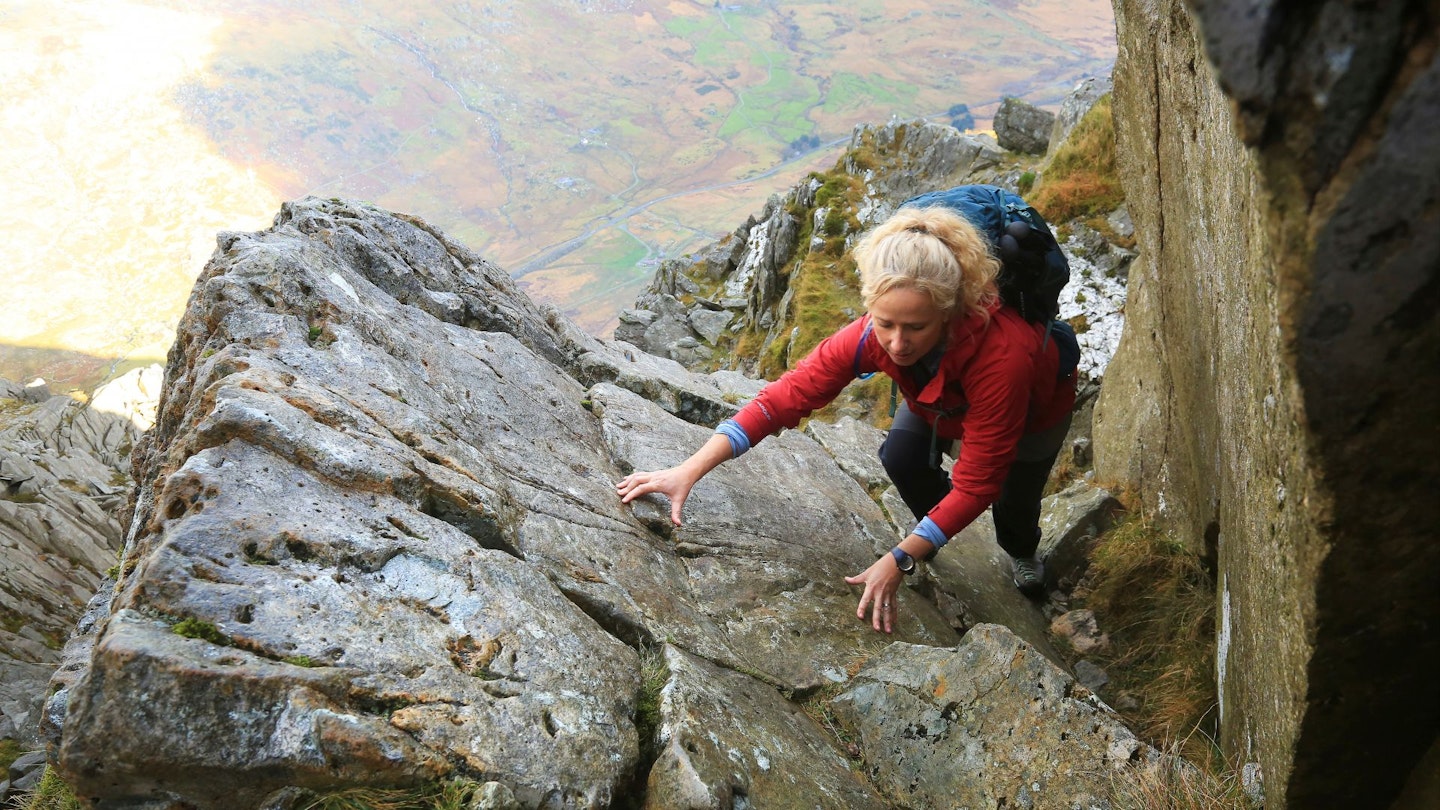Despite not having particularly tall mountains, the UK is home to some fantastic scrambles. And they are a great way to push yourself out of your comfort zone and feel huge waves of achievement upon completion.
UK scrambles range from reasonably benign yet magnificent Grade 1 scrambles like Tryfan’s North Ridge to bigger challenges like Aonach Eagach at Glen Coe and The Inaccessible Pinnacle on the Isle of Skye. There is something for everyone who is keen to give it a go.
While we encourage hikers to experience scrambling, it’s hard and risky and requires you to be careful. There is skill involved too, which is why we recommend the following tips to help you improve your scrambling ability.
Take up indoor climbing, yoga, or martial arts

These activities help to improve proprioception – your sense of where your body is in space.
This kind of awareness, developed and improved over time, will translate directly into increased body control and precise movement on a rock face, helping to retain stability and balance.
Climbing will help you become more comfortable with exposure too.
Practice! Make it a project
Do you have any scrambling goals? Maybe it’s to traverse Crib Goch or to complete the Cuillin Ridge.
Whatever the level you want to reach, start small but make regular, dedicated effort towards attaining your goal, progressing slowly up through the grades. Keep in mind that from around Grade 2 or above, you’ll need to become familiar with ropework.
Always keep three points of contact

This will help you maintain a secure base so that you can safely search out a handhold or foothold. Keep movements precise and methodical and be certain that a hold can take the weight that will shift onto it. Test it before you commit.
Study the route and pay attention to details
Find a good guidebook with a detailed description of the route and pay close attention to directions, from the approach and throughout.
Look out for signs of passage like polished rock, crampon scratches and disturbed vegetation and keep the guidebook handy for reference.
A route quite often takes the easiest or most practicable (and fun!) line up a face, and sticking to it will lead to a more enjoyable, less terrifying day.
Check out our Routes section for guides to some of the UK’s best scrambles.
